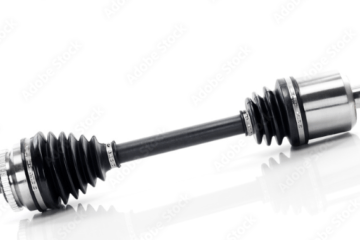Your car is a complex machine that requires regular maintenance to keep it running smoothly and efficiently. By following a regular maintenance schedule, you can help to prevent costly repairs down the road.
In addition to regular maintenance, there are also a number of replacement parts that you may need to keep your car in peak performance. These parts can wear out over time or become damaged, so it is important to inspect them regularly and replace them as needed.
Regular Maintenance
The following are some of the most important regular maintenance items for your car:
- Oil changes: Oil is essential for lubricating your car’s engine and preventing it from overheating. You should change your oil every 3,000 to 5,000 miles, or according to your car’s manufacturer’s recommendations.
- Air filter changes: The air filter helps to keep dirt and debris out of your car’s engine. You should change your air filter every 12,000 to 15,000 miles, or according to your car’s manufacturer’s recommendations.
- Tire rotations: Tire rotations help to evenly wear your tires and improve your car’s handling. You should rotate your tires every 6,000 to 8,000 miles, or according to your car’s manufacturer’s recommendations.
- Brake fluid flush: Brake fluid is hygroscopic, which means it absorbs moisture over time. This can lead to decreased braking performance and increased corrosion. You should flush your brake fluid every 2 years, or according to your car’s manufacturer’s recommendations.
- Belts and hoses: Belts and hoses can wear out over time and become brittle. This can lead to leaks and other problems. You should inspect your belts and hoses regularly and replace them as needed.
Replacement Parts
In addition to regular maintenance, there are also a number of replacement parts that you may need to keep your car in peak performance. These parts can wear out over time or become damaged, so it is important to inspect them regularly and replace them as needed.
Some of the most common replacement parts include:
- Tires: Tires are one of the most important parts of your car, and they should be replaced when they are worn out or damaged.
- Brake pads: Brake pads wear down over time, and they should be replaced when they are thin or damaged.
- Spark plugs: Spark plugs ignite the air-fuel mixture in your car’s engine, and they should be replaced every 30,00 to 40,000 miles
- Belts: Belts help to drive the various components in your car’s engine, and they should be replaced when they are worn out or damaged.
- Hoses: Hoses carry fluids throughout your car’s engine and other components, and they should be replaced when they are worn out or damaged.
How to Choose Replacement Parts
When choosing replacement parts, it is important to use high-quality parts that are compatible with your car. Here are some things to consider when choosing replacement parts:
- Brand: There are many different brands of automotive parts available, and it is important to choose a brand that you trust.
- Quality: The quality of the parts can vary greatly, so it is important to do your research and choose parts that are made from high-quality materials.
- Compatibility: The parts must be compatible with your car, so it is important to check the fitment before you buy.
- Price: The price of replacement parts can vary greatly, so it is important to compare prices before you buy.
Where to Buy Replacement Parts
There are many different places where you can buy replacement parts for your car. Here are a few options:
- Automotive Parts Stores: There are many automotive parts stores that sell a wide variety of replacement parts.
- Online Retailers: There are many online retailers that sell replacement parts.
- Salvage Yards: Salvage yards often sell used replacement parts that are in good condition.
- Local Mechanics: Local mechanics often have access to replacement parts that they can order for you.
How to Install Replacement Parts - If you are comfortable working on your own car, you can install replacement parts yourself. However, if you are not comfortable doing your own car maintenance, you can take your car to a qualified mechanic.
- Here are some tips for installing replacement parts:
- Make sure that you have the right tools and supplies before you start.
- Follow the instructions that come with the replacement parts.
- Be careful not to damage any of the surrounding parts.
- Test the part to make sure that it is working properly.
By following a regular maintenance schedule and replacing worn-out or damaged parts, you can help to keep your car running smoothly and efficiently for many years to come.
- Additional Tips
- When choosing replacement parts, it is important to use high-quality parts that are compatible with your car.
- You can often save money on replacement parts by buying them online or from a local salvage yard.
- If you are not comfortable doing your own car maintenance, you can take your car to a qualified mechanic.



